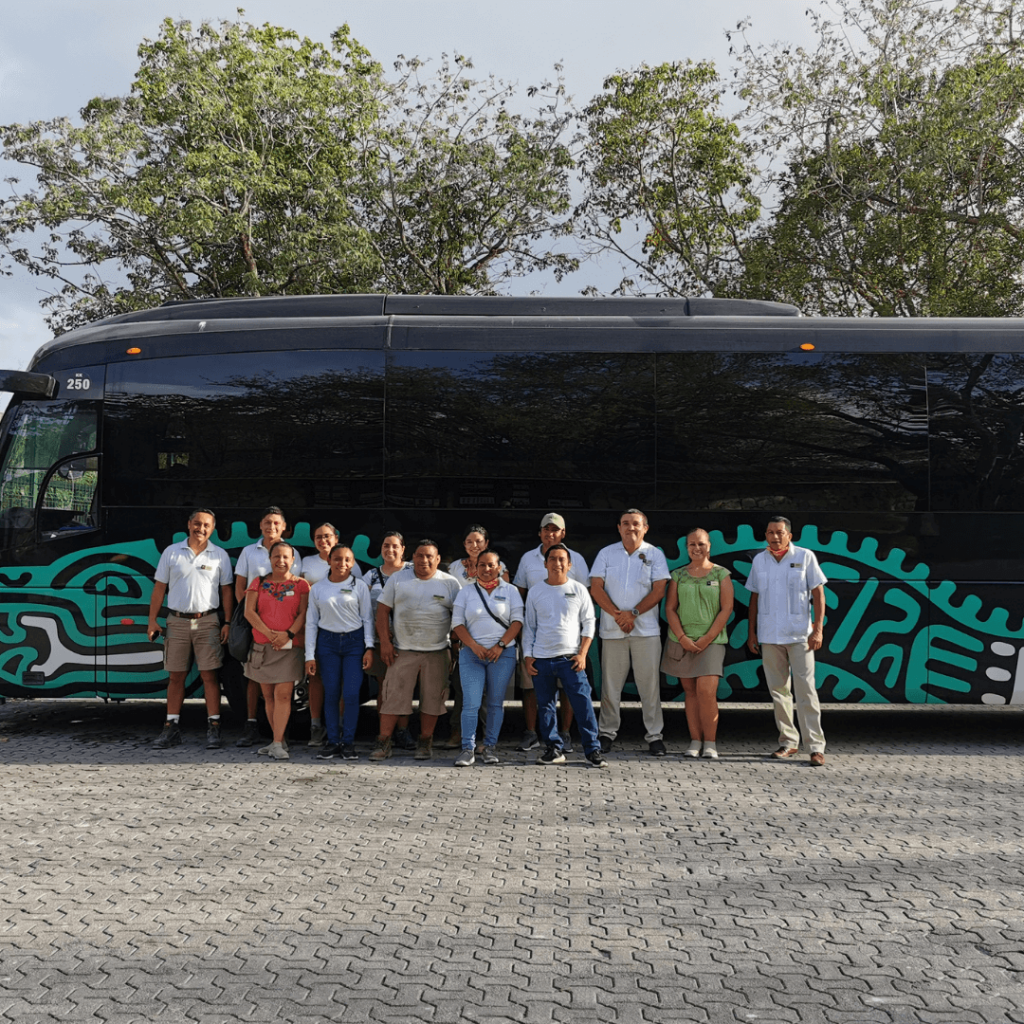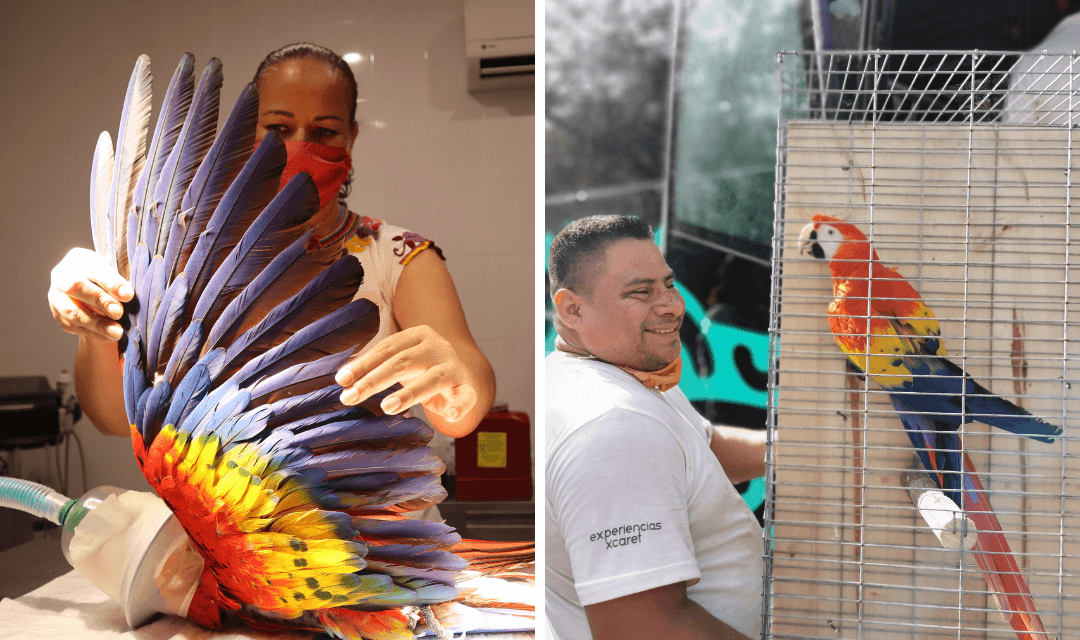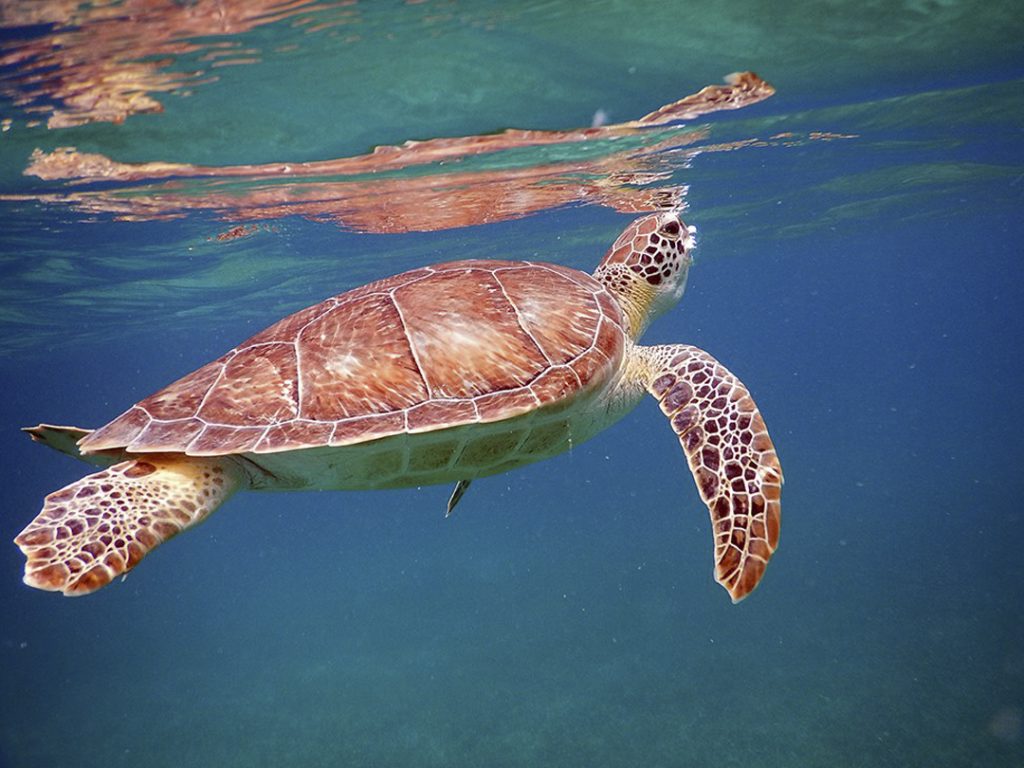The process behind the Xcaret macaws that were taken to Chiapas in 2022
June 05, 2022
It always seems impossible until it’s done: reforesting Mexican jungles with scarlet macaws
A dream Grupo Xcaret has made a reality.
It was a dream and since 2012 it has been a reality thanks to Grupo Xcaret, which since its inception has worked hard with the conservation of species and ecosystems. It all began in 1993, when the Psittacidae reproduction program under human care was implemented, which involved two species: scarlet macaw (Ara Macao Cyanoptera) and green macaw (Ara Militaris).
This program evolved in 2012 into the Conservation Program. The main goal of this program is to reintroduce the species of scarlet macaw (Ara Macao cyanoptera) into Mexican jungles and contribute to the protection and recovery of its wildlife populations. For this, actions were created from 6 important axes:
Learn more: Flying home: All about the scarlet macaw conservation program at Xcaret

1.- Studying places were to reintroduce the macaws
In collaboration with various institutions, viable sites for reintroduction were supervised and analyzed for specific elements, such as the type of species that live in the ecosystem, possible predators, and availability of food and water. This process allows us to evaluate whether the reintroduction site is adequate for the species.
2.- ANALYSIS OF THE POSSIBLE VARIATIONS OF SPECIES
We have worked together with various institutions such as the UNAM Institute of Biology, especially with Dr. Patricia Escalante, to carry out genetic mapping and detect if our specimens are viable for reintroduction into Mexican forests.

3.- OBSERVATION OF BEHAVIOR AND ADAPTABILITY
For a specimen to survive in the wild, it must be raised by its parents or under human care, but in a non-invasive way. We need to be sure that the macaws will be able to develop natural behaviors of their species and above all, survive without human help.
In this phase of the process, it is of the utmost importance that the species don’t form a bond with the human so that it can feed on its own in high areas near the trees, form pairs naturally, and fly without any difficulty. These behaviors will help the species to increase the chances of survival in the reintroduction sites.

4.- ANALYSIS OF THE HEALTH STATE OF THE MACAWS
Grupo Xcaret has a preventive medicine program that helps guarantee the health of the specimens, carrying out medical check-ups and internal and external deworming, checking their body condition such as weight and height, and evaluating their general state of nutrition.
Through constant reviews of the health status of this species, it allows us to ensure that the reintroduction of the specimen has the necessary conditions to survive. Before the transfer, we carry out an exhaustive medical examination, and blood samples to carry out laboratory tests and rule out diseases typical of psittacines.
5.- TRANSFER TO SITES OF REINTRODUCTION
Once the specimens have gone through the previous processes, the next step is the reintroduction, where they are transferred to the previously analyzed site. after several months of adaptation, they are incorporated into their habitat in the wild
6.- MONITORING
Monitoring the location and flight of the specimens to indirectly analyze their health is a very important part of the process. This way, we check status, identify if new couples have been formed, and detect births in the wild.
COMMITTED TO OUR GOAL DESPITE THE PANDEMIC
Worldwide, many of our activities stopped, but the care of our species has always been a priority, therefore, during the SarsCOV-2 contingency, we continued with our conservation projects.
On May 28, 2022, 16 scarlet macaws (Ara macao cyanoptera) were transferred to Aluxes Ecoparque, a non-profit civil association based in Palenque, Chiapas. These specimens have been placed in a temporary shelter for adaptation and gradually familiarize with the environment that will be their new home. Within a few months, they will be reintroduced to their habitat in the jungles near Palenque.




In 1992 we started our breeding program and in 2012 the reintroduction actions. To date, 189 scarlet macaws have been reintroduced in the Nanciyaga Ecological Reserve and other sites in the state of Veracruz and today these 16 are added to the population of Aluxes Ecoparque. In a joint effort with these institutions, we have carried out a total of 309 specimens with a calculated survival of 77%, so today around 240 macaws fly in the wild after many years of work and effort.


Editora de Blog Xcaret. Comunicóloga que ama viajar, escribir, tomar fotografías y estar siempre rod...

Posts Relacionados
Grupo Xcaret
Hotels






